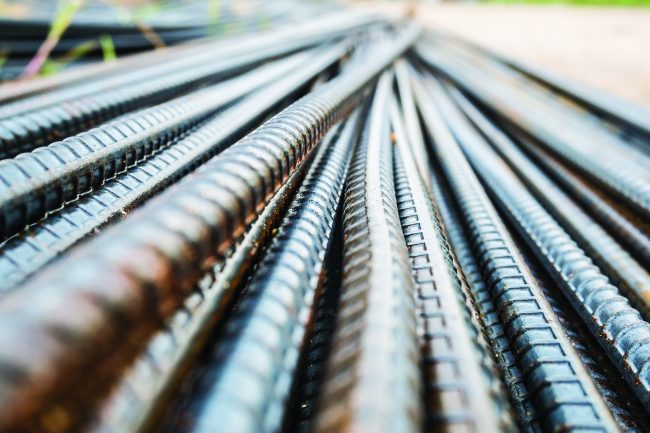
From the editor… The tariffs are gone, but don’t hold out for cheaper steel and aluminum
By David Kennedy
Construction Construction Materials
Tariffs drove the price for construction steel up considerably over the past year. Their being lifted may not mean a return to lower prices. PHOTO: Getty Images
Prime Minister Justin Trudeau, with several cabinet ministers in tow, took a victory lap through the Hamilton, Ont. Stelco plant May 17, hours after news of the tariffs being lifted first surfaced last month. Predictably, Trudeau credited his government’s countermeasures for the U.S. acceding to Canadian demands to shelve its steel and aluminum tariffs.
While the American justification for the metal tariffs was tenuous, at best, it had been just short of 12 months since they were imposed. Ottawa had responded in kind, slapping retaliatory duties of 25 per cent on steel and 10 per cent on aluminum. Costs in numerous industries climbed sharply as both countries dug in for the long haul.
But even with the tariffs eliminated, don’t expect prices for construction steel and aluminum to come plummeting back to Earth.
Since the duties were put in place last June, they’ve driven up the prices of vital materials such as rebar and heavy plate. Over the course of 2018, the cost to construct residential and non-residential buildings rose 5.1 and 4.6 per cent, respectively. Statistics Canada blamed much of the increase on the metal tariffs.
In the first quarter of 2019, prices continued to inch upward, with non-residential costs up another 0.8 per cent and residential prices up 0.3 per cent. The federal agency said contractors continued to point to the “lingering impacts” of the steel tariffs for the higher costs. Though prices for steel and aluminum are “still high,” they’ve started to stabilize over the first three months of 2019, Statistics Canada noted in its most recent assessment this May.
But scrapping the tariffs doesn’t mean an immediate return to lower costs.
Gerard McCabe, the managing director for Canada at real estate consultancy Turner & Townsend, for instance, isn’t optimistic about prices coming down.
“It’s the new normal,” he said in a recent interview. “Unless the market changes — unless we’re building less — and volume of construction drops and the market becomes a bit more competitive, I’m not expecting that the prices will drop just because the tariffs get removed.”
Costs have gone up considerably in the past year, but that’s done little to stifle building in Canada’s big markets. Activity in Ottawa, Toronto, Montreal, Vancouver and other major centres has remained buoyant. While this is good for builders boasting healthy backlogs, it also indicates to metals suppliers that the market can bear the added costs. The end of steel and aluminum tariffs will give manufacturers an excellent opportunity to increase their profitability while holding prices steady.
Those footing the higher bills for steel and aluminum — typically the owner, end-user or, in the case of infrastructure, the public — will continue to get saddled with the higher bills. That is, at least until construction slows and forces the competition to get fiercer, McCabe said.
As they have for the past year, contractors will need to take extra precautions to ensure they aren’t caught flat-footed. Continuing to build in a buffer to absorb price fluctuations and using escalation clauses in contracts are both good places to start.
Still, all this isn’t to say the end of the tariffs is bad news for construction.
Even if steel and aluminum prices don’t return to their pre-tariff levels, they should stabilize, meaning developers will be dealing with one less variable when deciding whether or not to pull the trigger on their next project.
This column first appeared in the June 2019 issue of On-Site. To read through the full issue, click here.




